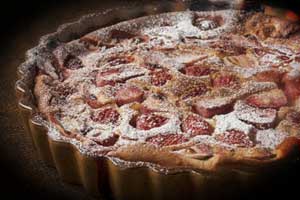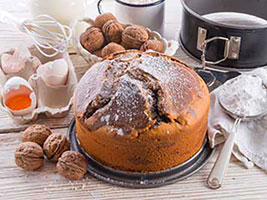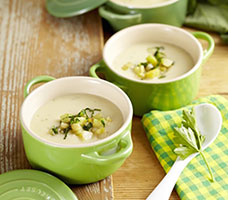Stainless Steel Pans
These pans are perfect if you love whipping up tarts and fruity cakes. Or desserts, like key lime pie, lemon drizzle cake, and cran-orange cookies. Stainless steel takes longer to warm up than aluminum but it retains the heat for longer.
Aluminum
This is a popular choice because it’s serviceable. Aluminum is a good conductor of heat which means it heats up quickly and heat is distributed evenly which is what we are looking for when cooking. The pans are lightweight and inexpensive.
The basic rimmed baking sheet is a bakeware staple in many kitchens, including mine, which I use often. The important thing to be aware of when using aluminum products is don’t cook tomatoes or acid foods on it.
Aluminum pans will need treatment to stop sticking. Either grease with butter or using a vegetable cooking oil, lightly spray and then lightly flour the pan. Tap pan to distribute the flour and then flip the pan, upside down to remove excess flour. The other option is to line the pan with baking paper.
A well reported lab test was conducted in 2012 by Cook’s illustrated. Tomato sauce was cooked in an aluminum pan for 2 hours and stored in the same pan overnight. It contained just .0024 mg of aluminium per cup. Compare that with over the counter antacids that have more than 100mg of aluminum in a single dose.
Here’s the problem with aluminum
Aluminium is highly reactive with citrus and acid foods like vinegar, vinegar-based marinades and tomatoes which makes your baking taste a little metallic. But that’s not the only thing. If the aluminum reacts with acidic foods, it means a minuscule amount of metal is leaching into your cooking. From our research, the amount is very small. In fact antacids have a larger Although these are miniscule amounts it’s not desirable.
The better option, the pan should be coated with a non-stick coating, PTFE (Teflon is the trademark name) coating that will prevent leaching.
The non-reactive option is to choose hard anodized non-stick aluminum for saucepans and skillets.
For saucepans and cooking pots that we use every day, it’s important to note that most aluminum cookware is either non-stick coated, hard anodized, or stainless steel clad (Cuisinart for example) so food doesn’t come into contact with aluminum. To try to put this into context, antacids purchased over the counter have more than 100mg of aluminum in a dose. There is naturally occuring aluminm in our diets Beef, poultry, ham eggs and fruits have 1milligram or less of aluminium per kg of food. Fresh veg contain between 1 to 4 milligrams per kilogram. Spinach 5 times more per kg.
Kitchen Foil
Never store tomatoes in kitchen foil for the same reason. If you consider yourself a bit of a ‘fruity’ baker, stainless steel pans are the best choice for you. They don’t react with citrus, so your cakes will taste great. Alternatives to aluminum foil baking paper, grill veggies stainless steel grill, stainless steel cookie sheet to catch oil. You shouldn’t store acidic foods like tomato sauce or salty foods in aluminum
Cast Iron Pans
Love that feeling you get when you tuck into a treat that you’ve had cooking low and slow all day long? The smell that fills the home is mouthwatering. If you like the low and slow method – which is great for stewed fruits – consider cast iron cookware, like Le Creuset. Cast iron pans are heavy. Designed for heats up to 375 degrees Fahrenheit, heating slowly and evenly. Le Creuset is one of the best ways to help your flavors to really develop; click here to read more. Delicious!
Dark Colored Pans
You might have noticed that some sheets look brand new and fantastic, with a bright, shiny coating. Others look a little older, used, and are very dark in color. What’s the difference?
Dark colored pans don’t reflect heat. They absorb it and retain heat for long periods.
Great for fudgey brownies and gooey cookies. You can remove them from the oven earlier and they’ll continue to cook slowly on the sheet but still retain their soft centers.
"choose me" for fudgey brownies and gooey cookies
Silicone Pans
Available in bright colors that can really liven up the kitchen, but are they good for baking? There’s a trend for many bakers to start looking at making ‘healthier’ cakes. Cakes with less sugar, or less fat, for example. If you’re wanting to cook with less fat, silicone pans are ideal. The less grease used in these pans the better. Grease isn’t absorbed by silicone as it is with metal, and large amounts can prevent your cake from browning.
One of the most important aspects is to consider your own personal style of cooking. There are tins to suit every preference.
https://www.americastestkitchen.com/cooksillustrated/how_tos/6390-cooking-with-aluminum-pans-controversy?ref=HowTo_browse_23
https://healthfully.com/poisons-from-aluminum-cookware-5082008.html




